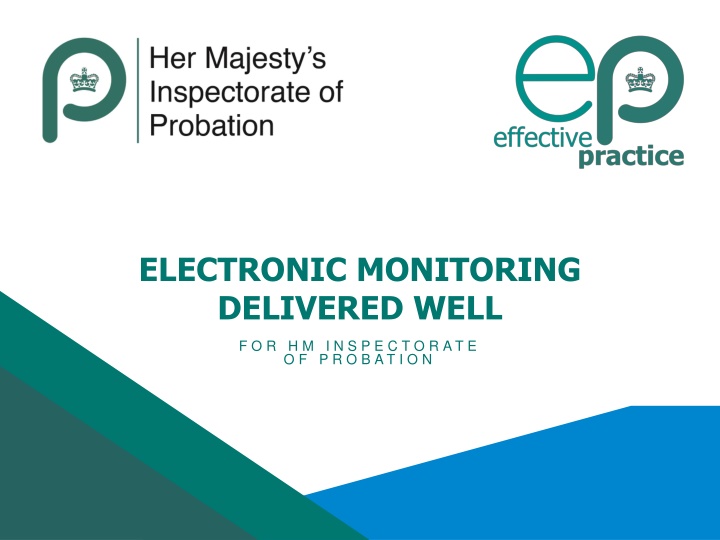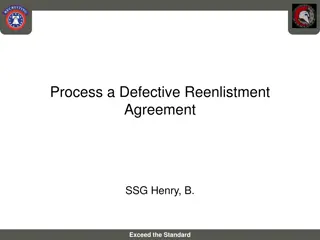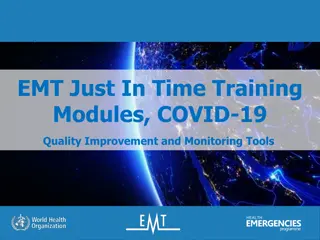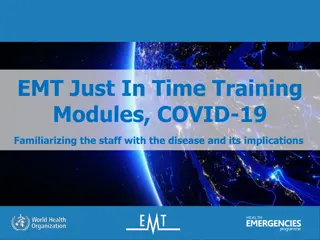
Electronic Monitoring in Probation Inspections
Explore the methodology, types, and benefits of electronic monitoring in probation inspections, including GPS tags, alcohol abstinence monitoring, and community sentence curfews. Learn about how these technologies are used and their impact on probation practices.
Download Presentation

Please find below an Image/Link to download the presentation.
The content on the website is provided AS IS for your information and personal use only. It may not be sold, licensed, or shared on other websites without obtaining consent from the author. If you encounter any issues during the download, it is possible that the publisher has removed the file from their server.
You are allowed to download the files provided on this website for personal or commercial use, subject to the condition that they are used lawfully. All files are the property of their respective owners.
The content on the website is provided AS IS for your information and personal use only. It may not be sold, licensed, or shared on other websites without obtaining consent from the author.
E N D
Presentation Transcript
ELECTRONIC MONITORING DELIVERED WELL F O R H M I N S P E C T O R A T E O F P R O B A T I O N
Methodology North West Fieldwork completed July to September 2021 6 regions 172 cases inspected that had an electronically monitored requirement as part of a community sentence or licence condition, including home detention curfew 102 probation practitioners interviewed 19 sentencers 42 interviews conducted by Penal Reform Solutions with people on probation to understand their experience of electronic monitoring Visited EMS (providers of electronic monitoring) and spoke with national electronic monitoring programme team. Yorkshire and the Humber East Midlands Wales London South Central
What is electronic monitoring? Radio frequency tags these are fitted for the purpose of monitoring curfew only, either as part of a community sentence or home detention curfew to confirm if the wearer is at a specific address for a specific period of time. Global Positioning System (GPS) tags these are fitted for the purpose of monitoring a person s whereabouts. Available as part of a community sentence or home detention curfew, regardless of type of sentence, or as part of licence conditions for specific sentence types. Able to monitor the following requirements: - Trail monitoring the individual s whereabouts are monitored 24/7 and data is available that tracks the individual s movements. Exclusion zones monitors if the wearer enters a defined exclusion zone and raises an alert to the probation practitioner if the exclusion zone is breached. Attendance monitoring able to confirm attendance at a specific location at a specific time. - - Image credit: HMPPS
And theres more Alcohol abstinence monitoring tag available as part of a community order where alcohol has contributed to the offence. Designed as an intervention to impose a period of alcohol abstinence on the wearer. Level of alcohol in the wearer s blood system is measured every 30 minutes. Any reading that indicates there has been alcohol use is fed back via local administrative officers within PDUs. A pilot enabling the use of the alcohol abstinence monitoring tags for those on prison licence commenced in November 2021 in Wales. Image credit: HMPPS
Community sentence curfew Q: At pre-sentence stage For those cases where an electronically monitored curfew was imposed, what percentage of cases inspected had domestic abuse checks completed before the sentence was given? 17% 77% 37% 57% Answer 37%
Home detention curfew Q: Does the home detention curfew address check form ask you if, in your professional opinion, the proposed address is suitable? Yes No Answer Both answers are correct.
More HDC Q: Can you request that HDC is monitored with GPS technology so you can also impose an electronically monitored exclusion zone, trail monitoring or attendance requirement? Yes No Answer Yes.
Parole board release GPS monitoring can be applied by the Parole Board as part of release conditions for those individuals who are subject to life, indeterminate or extended sentences. Q: In our inspection the majority of these cases were released to approved premises in the first instance. What would be a possible drawback of having GPS applied at point of release? Answer This risk management tool is often coming to the end just as the person on probation moves out of the approved premises and when it would be most useful to understand their whereabouts and activities.
Allocation Q: When you are allocated a case that is subject to electronic monitoring, according to PI 2019-01, how soon after allocation should you forward the risk management and probation practitioner information form to the electronic monitoring provider? Within one day Within five days Within 10 days Answer Within one day.
Initial assessment Q: How may electronic monitoring impact on each of these OASys sections? Accommodation Education, training and employment Finance Lifestyle and association Relationships Emotional wellbeing Drug misuse Alcohol misuse Thinking and behaviour Attitudes
Sentence plan Q: How many probation practitioners thought electronic monitoring was helpful in promoting desistance from offending? 88% 48% 28% 68% Answer 88% Q: In the cases that we inspected, how many probation practitioners identified electronic monitoring as potentially reducing reoffending and supporting desistance within sentence plans? 81% 61% 11% 31% Answer 11%
Risk management plans Q: How many probation practitioners thought electronic monitoring was helpful in managing risk of harm? 22% 52% 72% 92% Answer 92% Q: In the cases that we inspected, how many probation practitioners identified electronic monitoring as a monitoring and/or control intervention within their risk management plans? 40% 10% 90% 60% Answer 60%
Supervision Q: 42 people on probation were interviewed as part of this inspection. Which of the following were main themes that emerged from the findings: Lack of communication about what being on tag meant Wellbeing Feeling of shame Impact on relationships? Answer All of them.
Reviewing Q: How many cases were reviewed at the end of the electronically monitored period? 36% 16% 56% 76% Answer 16%
Case reflections Discuss your own cases subject to electronic monitoring: What is working well with these cases? What improvements could be made? Is electronic monitoring being used to its full potential?
Useful information Links to reports and supporting documents: The thematic review of the use of electronic monitoring as a tool for the Probation Service in reducing reoffending and managing risk and the accompanying Penal Reform Solutions report are available on HM Inspectorate of Probation s website. Read HM Inspectorate of Probation s Electronic monitoring delivered well: Effective practice pack including: Key takeaways guide Case studies Electronic monitoring: managing risk and supporting desistance infographic. www.justiceinspectorates.gov.uk/hmiprobation





















